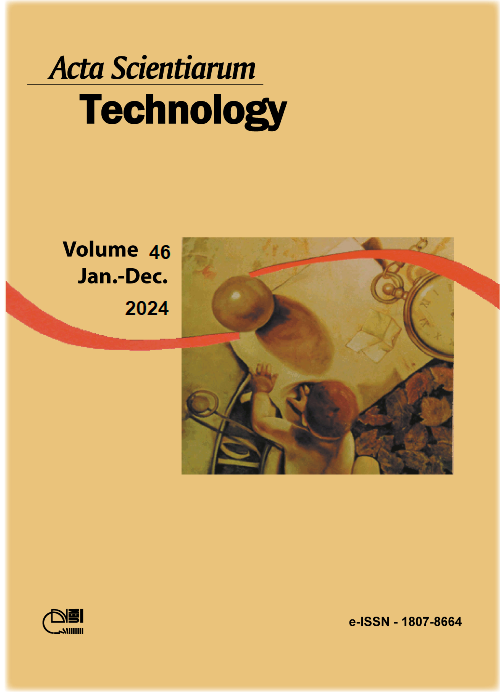Compressive strength assessment bricks manufactured with Phosphogypsum in different dosages
DOI:
https://doi.org/10.4025/actascitechnol.v46i1.64840Palavras-chave:
civil construction; sustainable materials; bricks; recycling; industrial wastes.Resumo
This research studies soil-compacted bricks using Phosphogypsum (PG) in their dosage. PG is the subproduct of the primary raw material used by the fertilizer industry, and its disposal is a challenge for the industry because of its large generation. Laboratory tests were performed to assess these bricks' physical characteristics. To obtain the bricks, two dosages were used: 4 and 7% of Phosphogypsum (PG) concentration. Bricks with no Phosphogypsum (PG) in their mixture were also assessed as a benchmark. The brick's physical characteristics were obtained for non-fired and fired bricks (900ºC for 96 hours in the oven). The results of the laboratory tests were analyzed through statistical analysis to explore the differences between the means for each studied condition (dosage and drying method). Furthermore, there was no statistical difference between the compressive strength of bricks manufactured with 4 and 0% PG, pointing out that until this percentage, the studied bricks did not show strength reduction with PG increasing. The fired bricks showed higher strength for all dosages than the non-fired ones. However, according to the Brazilian Technical Standards, all studied bricks presented enough strength for regular construction. Phosphogypsum (PG) for brick manufacturing can be an alternative way for its disposal, which can help mitigate the civil construction environmental impacts.
Downloads
Downloads
Publicado
Como Citar
Edição
Seção
Licença
DECLARAÇíO DE ORIGINALIDADE E DIREITOS AUTORAIS
Declaro que o presente artigo é original, não tendo sido submetido í publicação em qualquer outro periódico nacional ou internacional, quer seja em parte ou em sua totalidade.
Os direitos autorais pertencem exclusivamente aos autores. Os direitos de licenciamento utilizados pelo periódico é a licença Creative Commons Attribution 4.0 (CC BY 4.0): são permitidos o compartilhamento (cópia e distribuição do material em qualqer meio ou formato) e adaptação (remix, transformação e criação de material a partir do conteúdo assim licenciado para quaisquer fins, inclusive comerciais.
Recomenda-se a leitura desse link para maiores informações sobre o tema: fornecimento de créditos e referências de forma correta, entre outros detalhes cruciais para uso adequado do material licenciado.



















